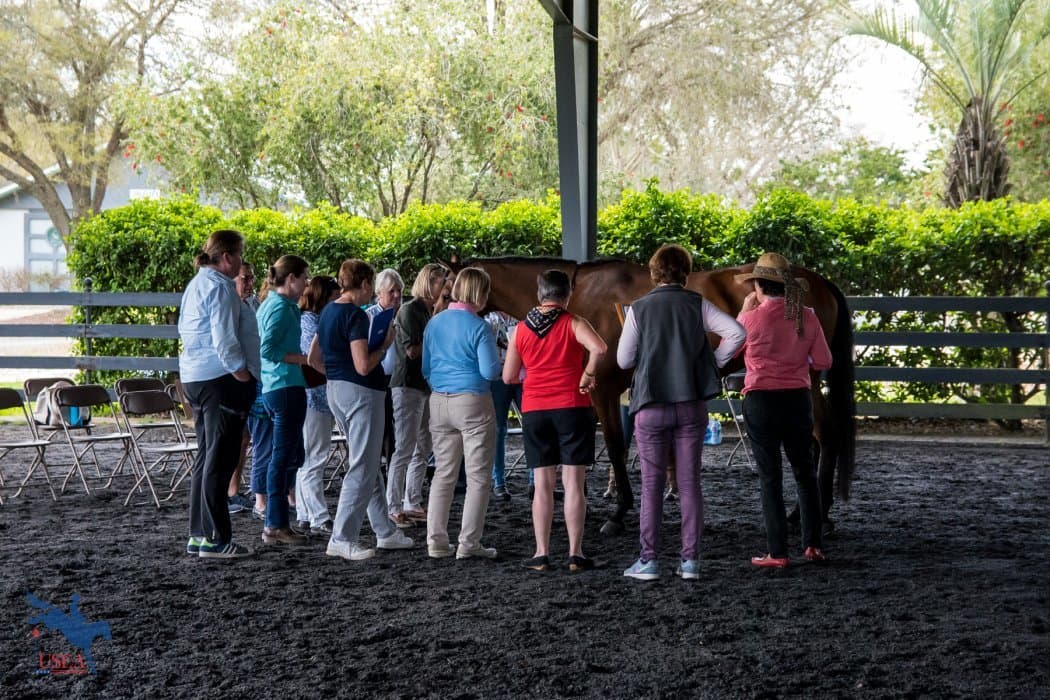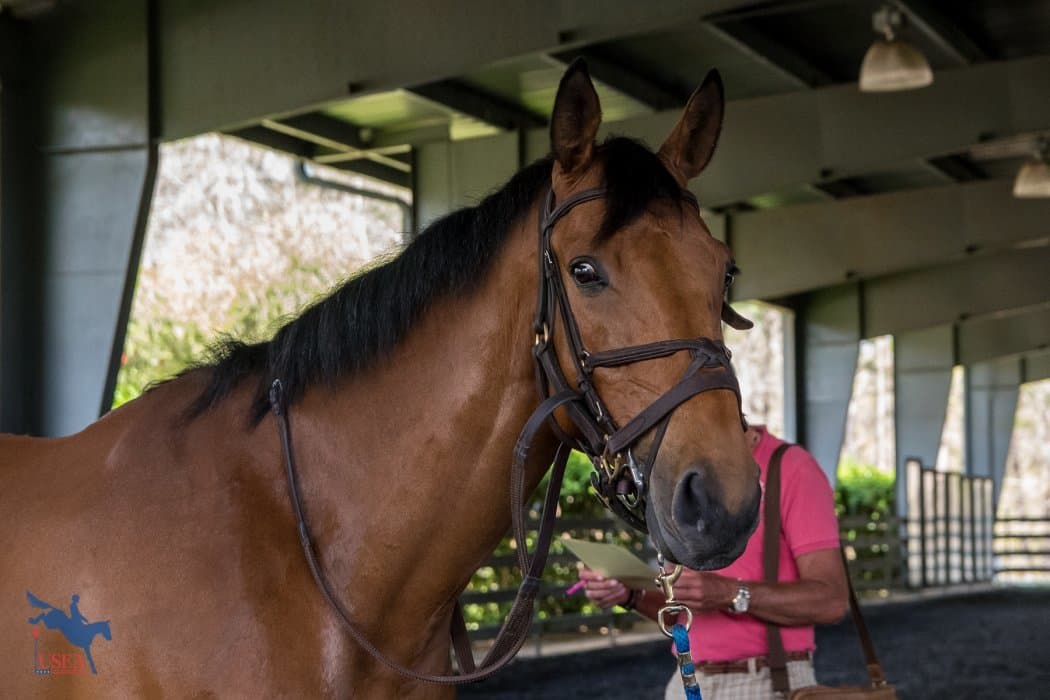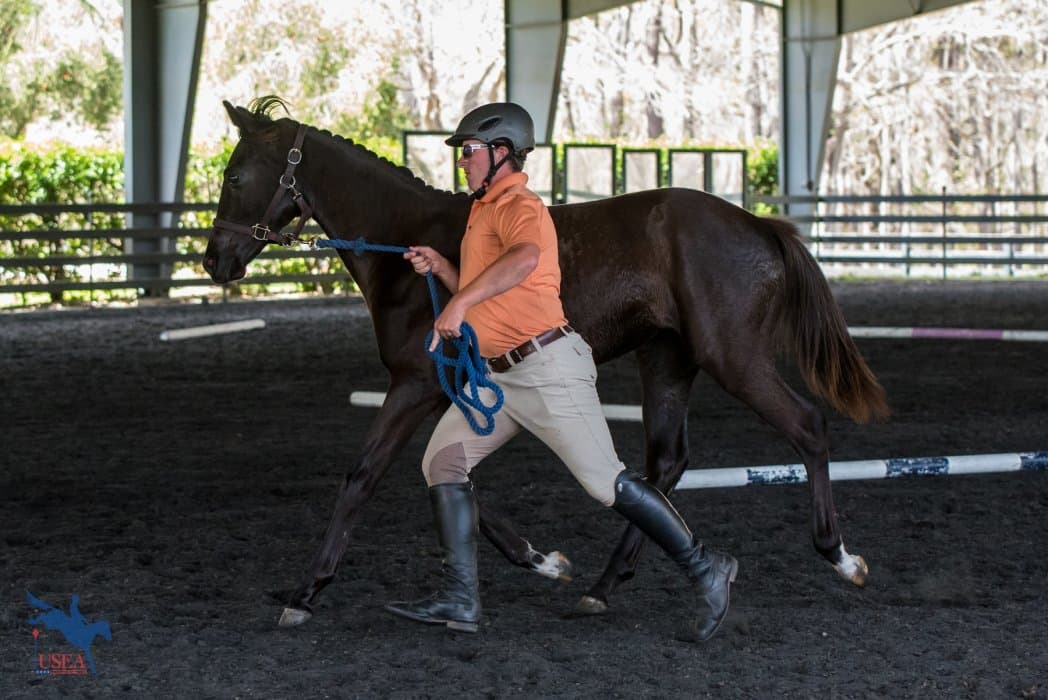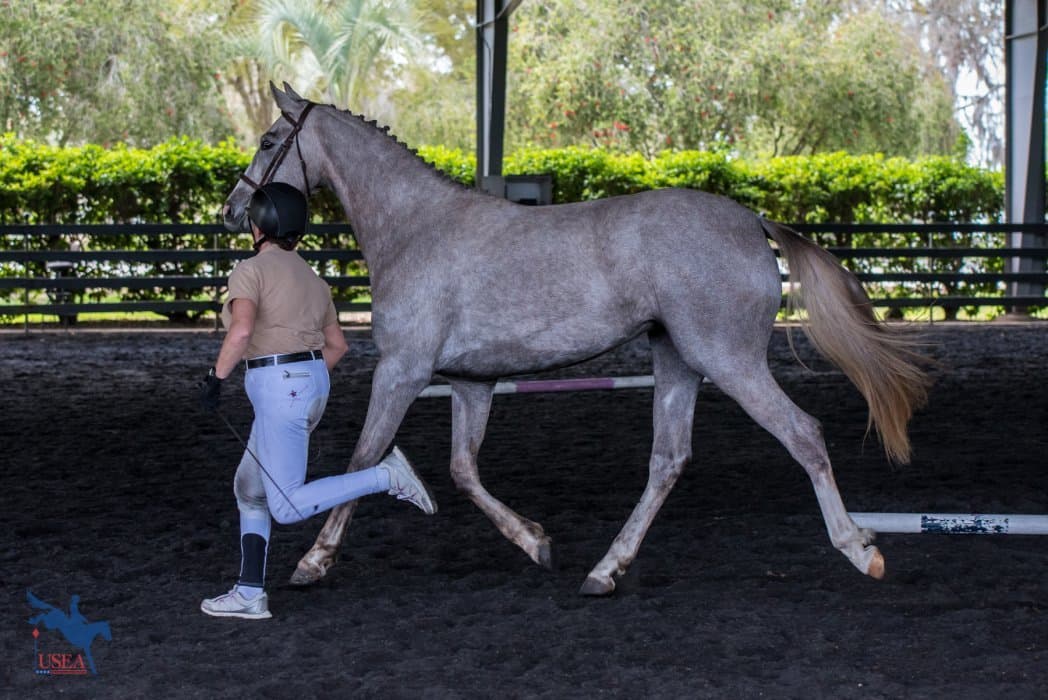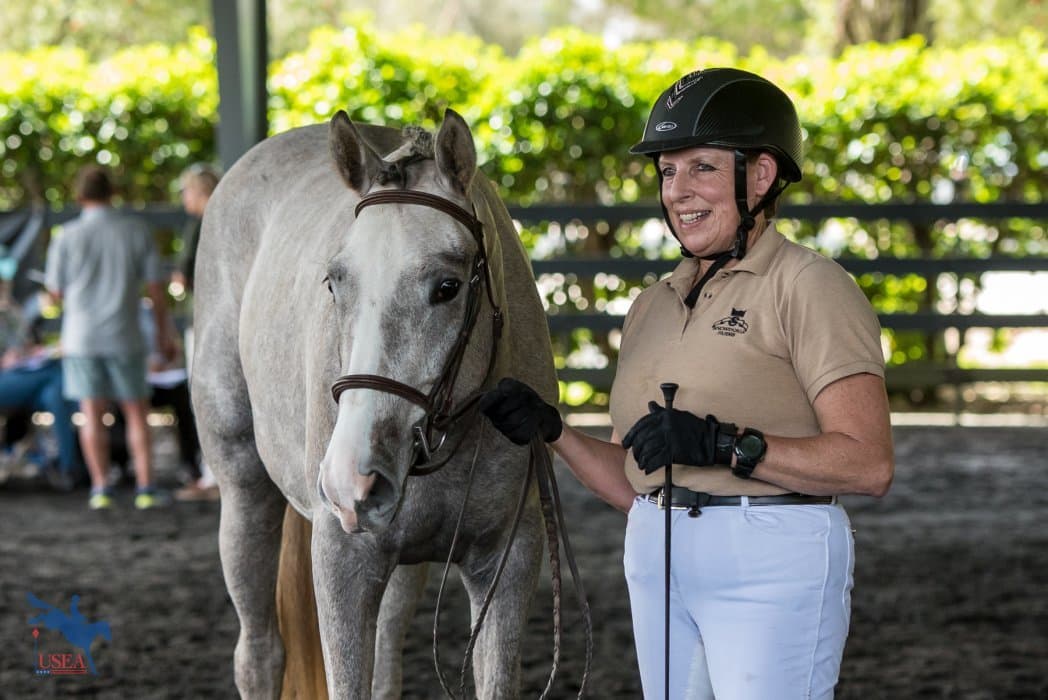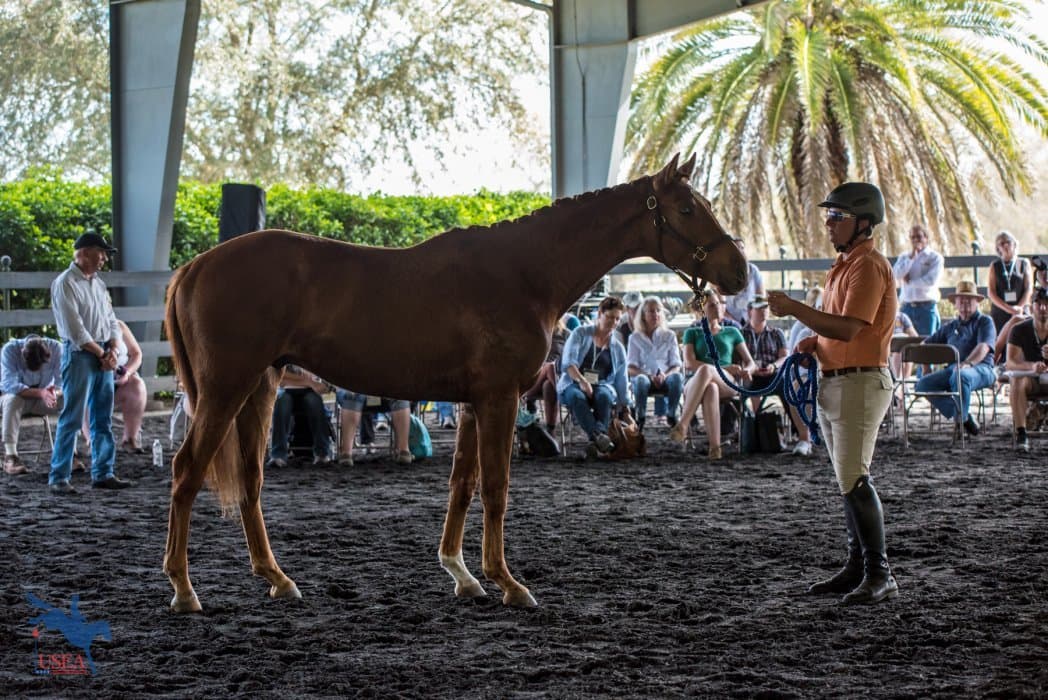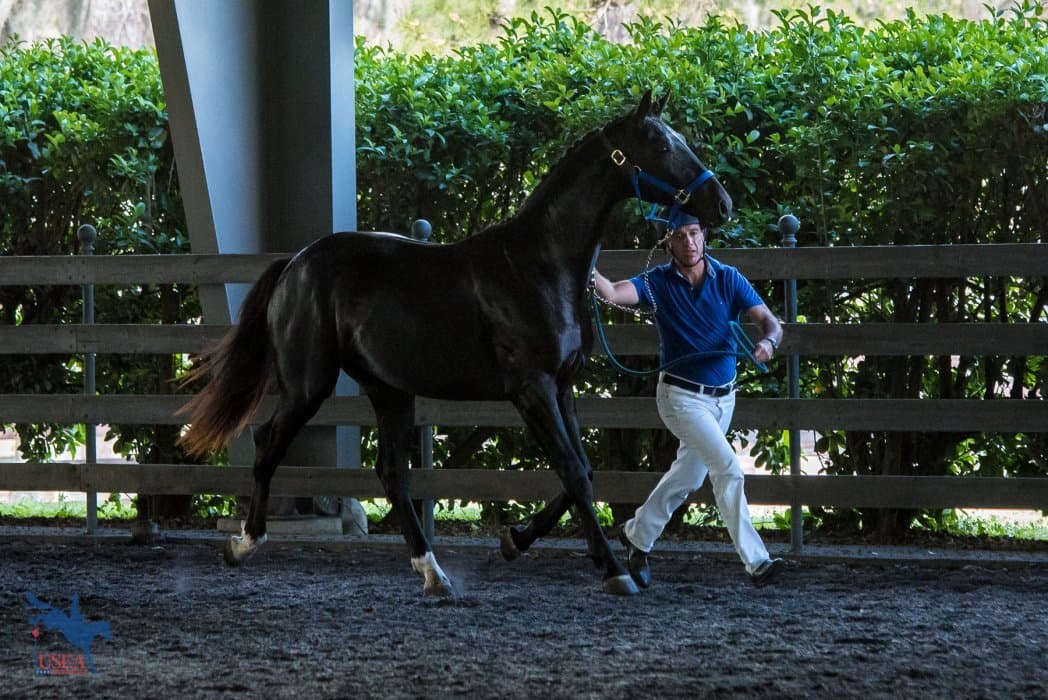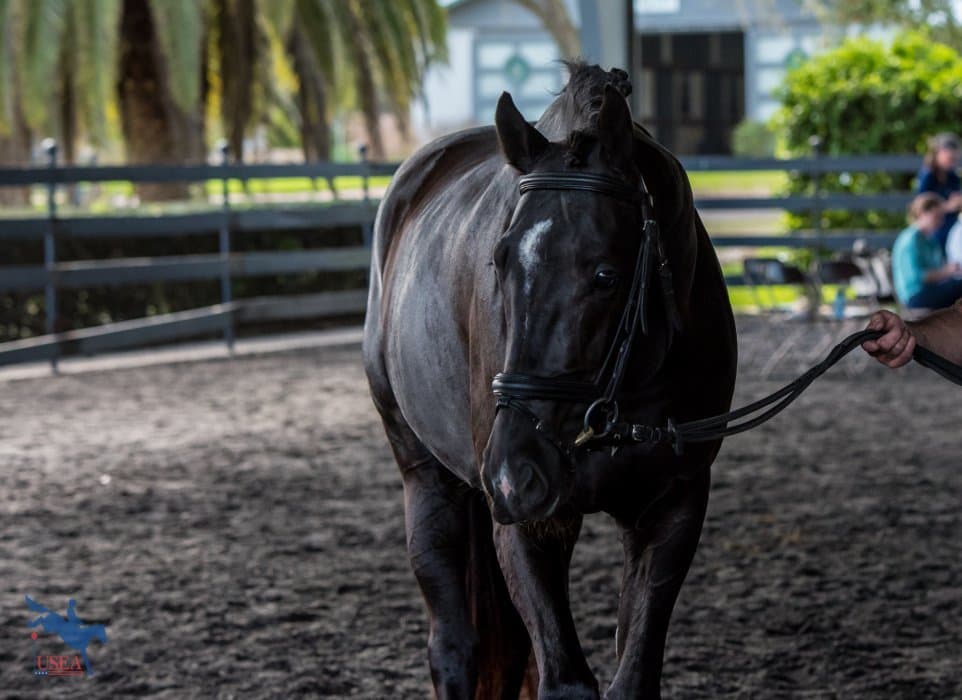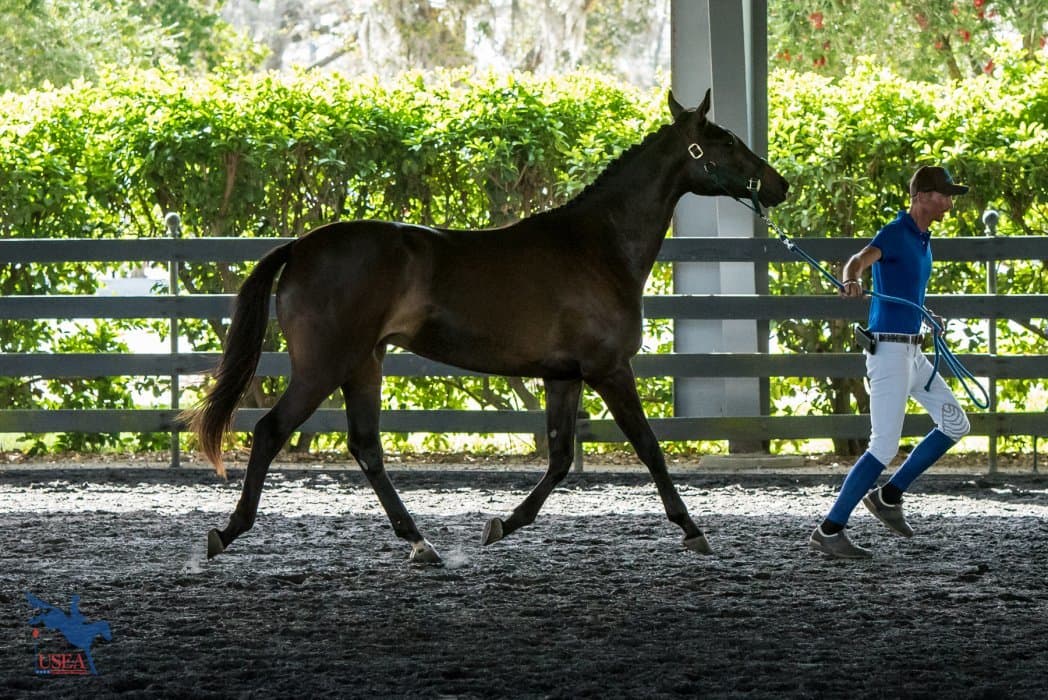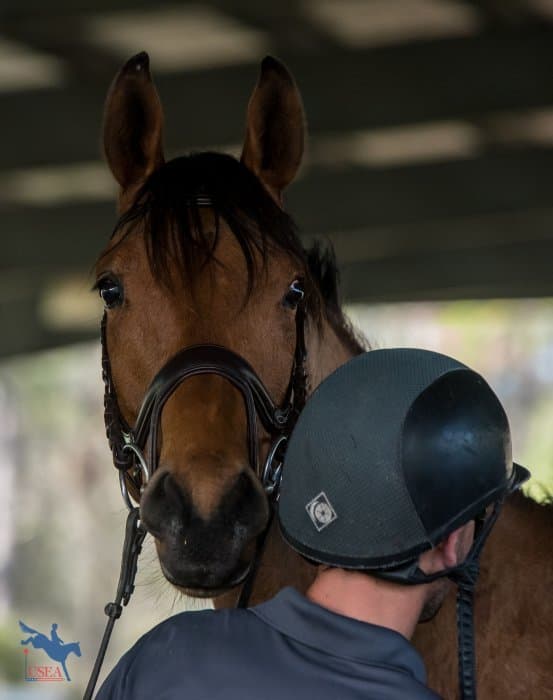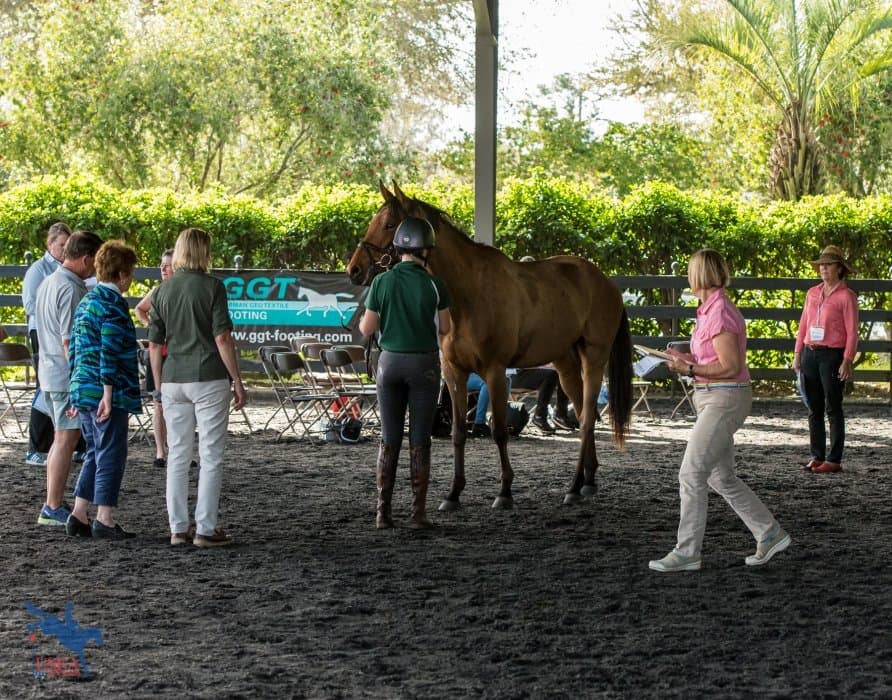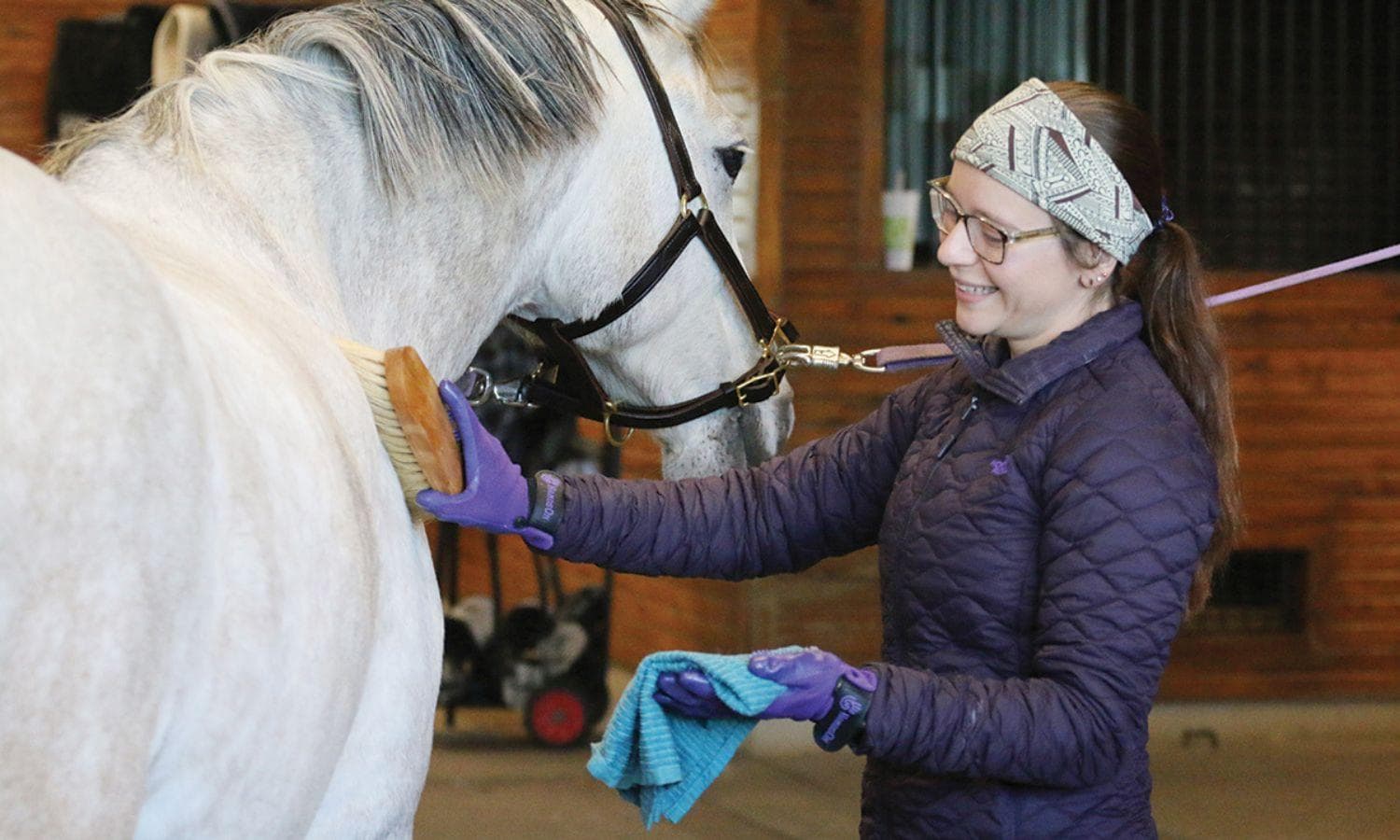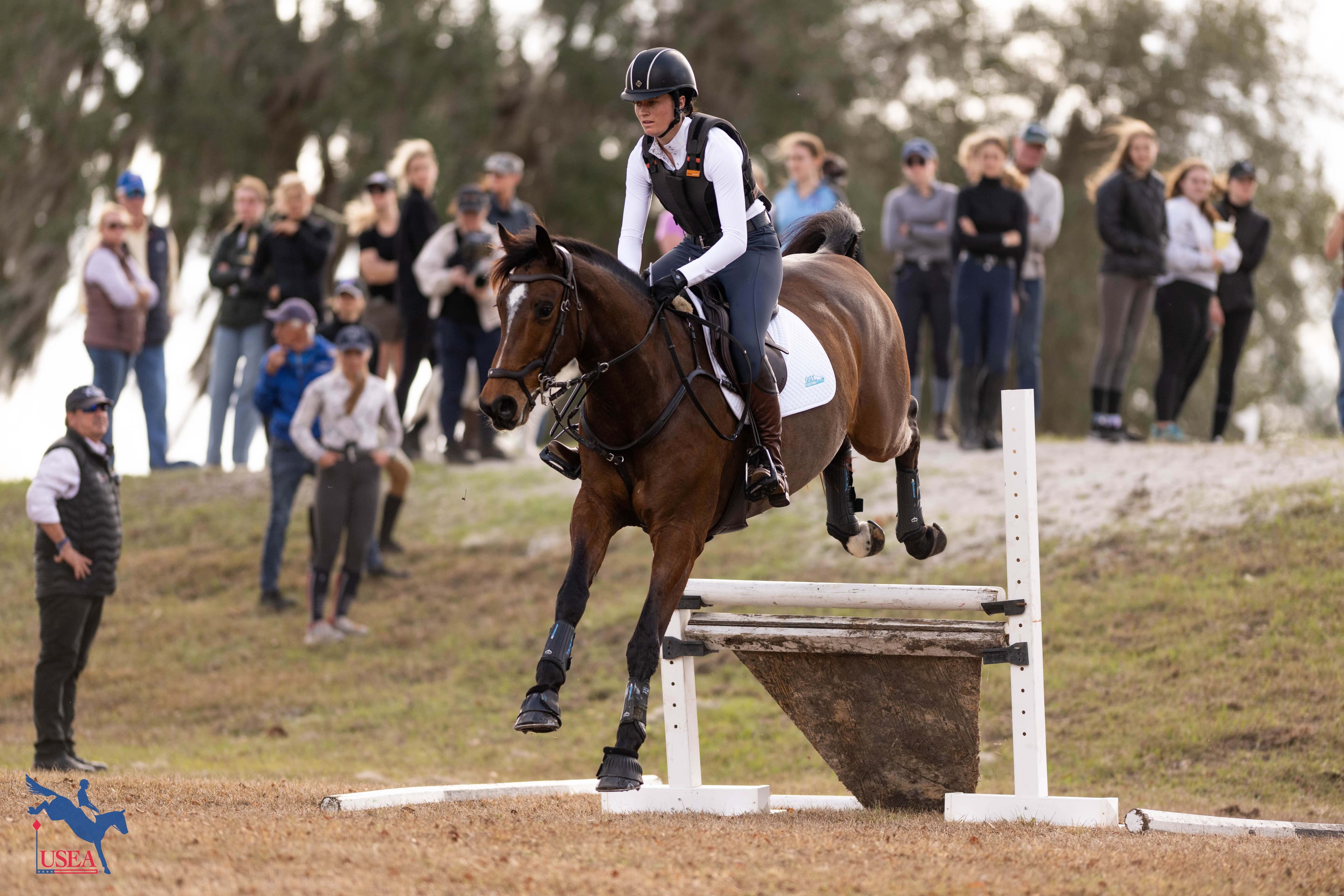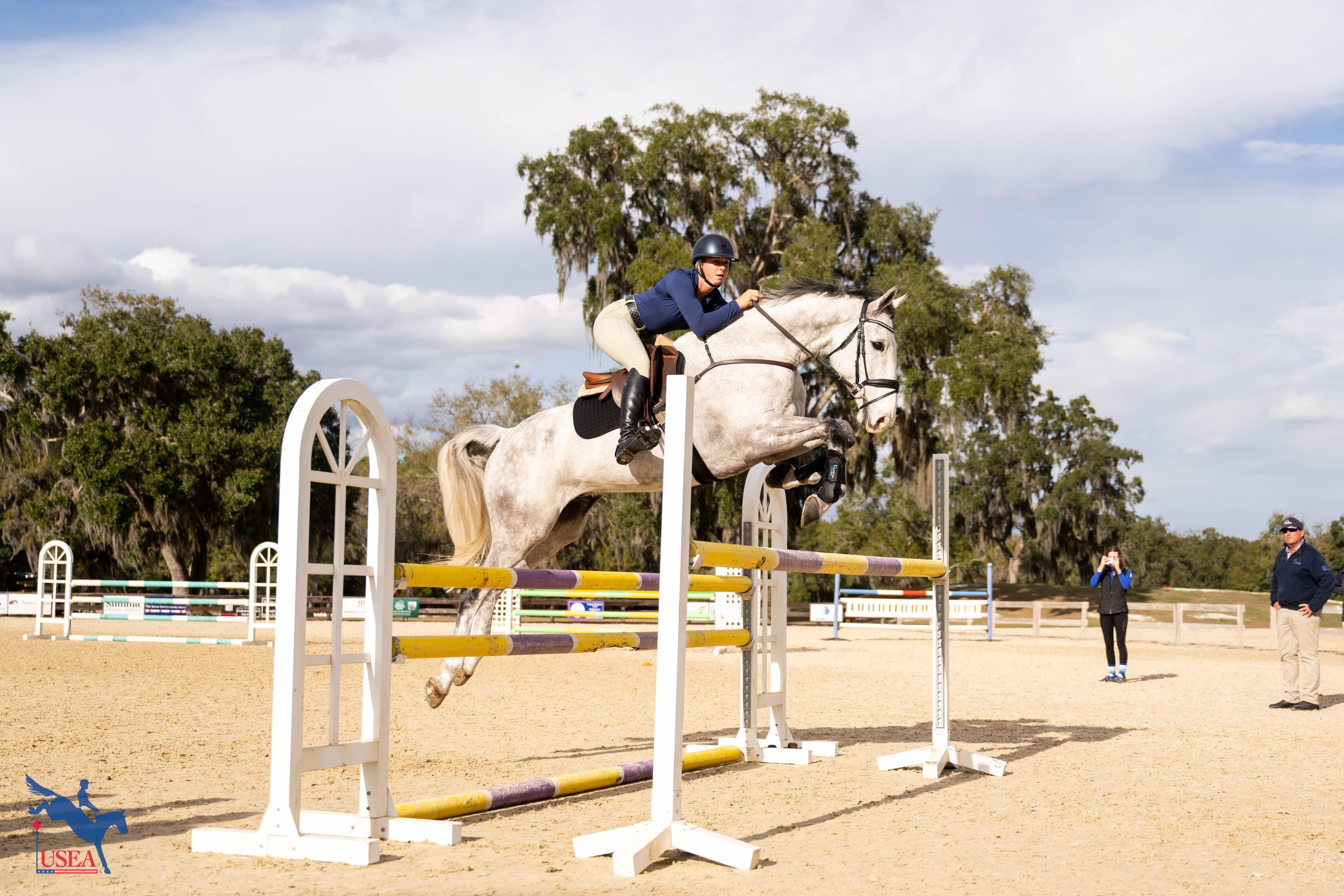All Eyes on FEH Conformation on Day Four of the 2018 Educational Symposium
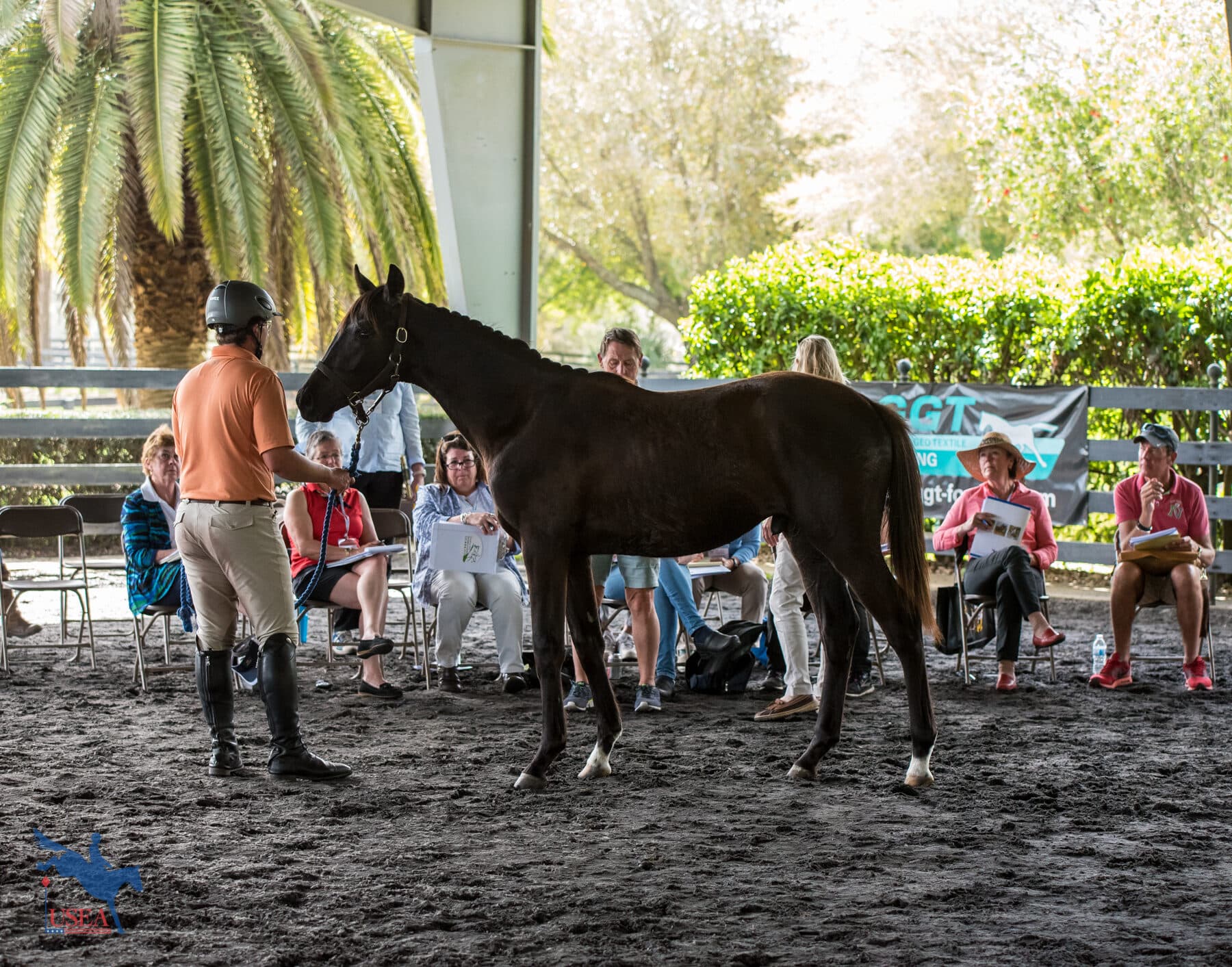
Attendees at this year’s Educational Symposium returned to the Clubhouse at the Ocala Jockey Club this morning to begin the final day of the Educational Symposium with the classroom portion of the Future Event Horse (FEH) Symposium.
Irish horseman Chris Ryan kicked things off with a discussion of the importance of the broodmare in breeding event horses. “When evaluating the pedigree of the event horse, the focus usually goes to the sire line, but for me, the dam line is a more important indicator of genetic worth . . . A mare who has produced a top horse has an excellent chance of producing another, even by a different sire,” he said.
When describing his ideal broodmare, Ryan said, “I like my mare to have a lot of refinement and quality through Thoroughbred blood . . . I worked in horse racing for 15 years and it’s given me a real connection to the Thoroughbred breed and what it brings to the event horse.” He noted that while the full Thoroughbred has had excellent success in eventing, his preference is for a horse with 3/4 blood or 7/8 blood, as these horses tend to have the gallop and stamina of the Thoroughbred with the rideability and brain of the half-bred. Ryan looks for broodmares that possess the qualities he ultimately wants to see in their offspring, including supple movement, good feet, excellent conformation, and healthy pulmonary and cardiac function.

“Performance is the ultimate indicator of potential,” Ryan pointed out. “It’s not about the sire or the dam, it’s about their [offspring], and that’s what you’re buying into in the breeding game.” Ryan discussed the pedigrees of some of the horses at the top of the world rankings, indicating where their pedigrees have come into play. He also discussed the accomplishments of the offspring of the top sires Master Imp and Heraldik, indicating where their blood influenced their offspring and how combining full blood horses with half-blood horses has resulted in excellent examples of model and type.
Ryan offered up some general advice on choosing a sire and dam when looking to produce an event horse. “I suggest you aim for slightly more blood than you think you’re going to need,” he stated. “Before choosing a sire for your mare, look at as many [offspring] as you can. Do they share a similar quality or defect?”
“The breeding game is not perfectly accurate, but what were’ trying to do is maximize our chances.” Ryan concluded. “When I look at a horse, it’s got to start with the broodmare . . . If you’re going to get into breeding, invest in the broodmare side.”
Dr. Shauna Spurlock then gave a presentation on conformation concerns for the event horse. She explained that, when judging conformation, you want to look for parts of the conformation that indicate a predisposition towards performance and durability. “When I look at a horse, I look at two different categories; what’s going to keep that horse sound and what’s going to help that horse do his job.” She stressed that while you can use traditional conformation “rules,” you also have to be able to apply your personal experience as far as what makes for a successful horse.
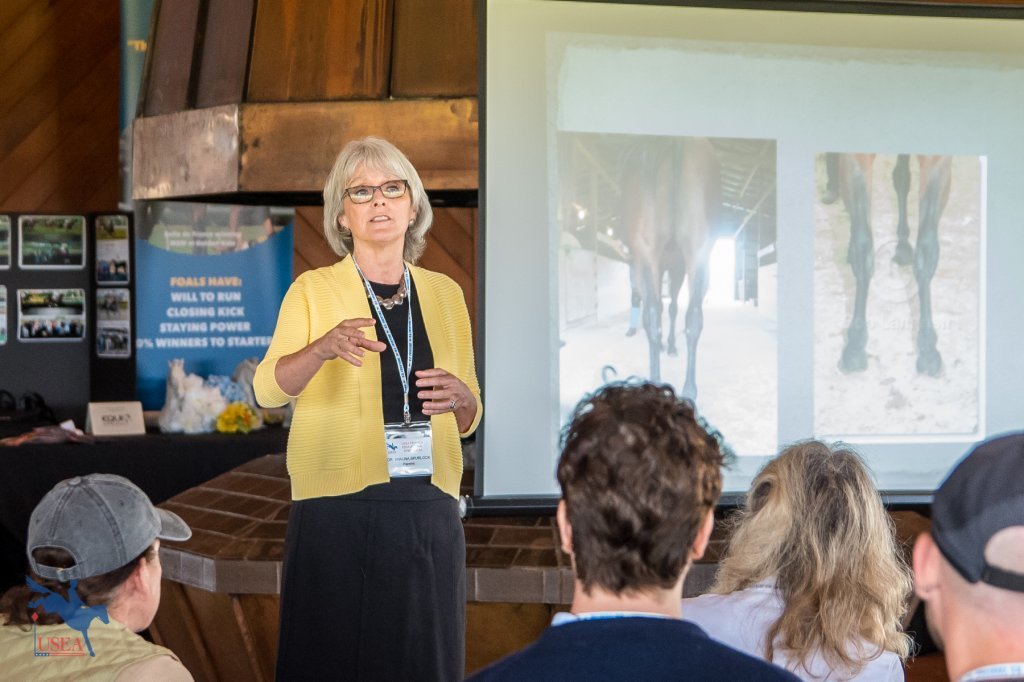
How the horse hits the ground is a crucial part of soundness, and the horse’s skeletal structure will play a huge role in the amount of concussion a horse sustains when he moves across the ground. “All the force and energy of a single stride connects with the ground, and when the horse hits the ground that creates concussion,” Spurlock explained. “You need to look at how the gait is going to affect the skeleton as the muscles contract.” Where does all that energy go? “It goes into the deformity and expansion of the hoof, it goes into the bones, contributing to wear and tear, and it goes into the tendons and ligaments.”
Dr. Spurlock explained that horses mature from the ground up, meaning that they will mature in their feet and legs before they mature in their bodies, so it’s very important to keep that in mind when judging horses that are still maturing, like those in the Future Event Horse classes. “As a judge, you want to be able to predict how that horse is going to change over time,” and that’s where it’s important for judges to be able to see the underlying structure of the horse beneath the muscle and fat. “Look at the horse and understand that they’re a work in progress.”
She then delved into more specific examples of conformation issues that will affect long-term soundness, examining issues in the body, the feet, and the legs. Overall, Dr. Spurlock noted that, “When I look at the horse, whether I’m looking at body, legs, or feet, I want to see symmetry from one side to the other.” Asymmetry in any aspect of the conformation is cause for concern as it will affect the durability of the body over time as wear and tear will be uneven. She also pointed out that, “Really what we want to do in all conformational things is avoid extremes.” Many horses with slight variations in their conformation will still be able to do their job just fine, and it is important to notice these variations so they can be managed appropriately. However, we tend to see the most problems when extreme changes in the conformation affect the body’s ability to absorb concussive forces.

The morning session concluded with FEH Committee Co-Chairs Robin Walker and Susan Graham White discussing the judging process for the Future Event Horse classes. Over the past year there have been inconsistencies in how the class is judged, and this year the committee is taking action to improve judge education and thus improve the consistency of scoring at FEH events.
Both Walker and Graham White provided examples of their own judging process. “You need to know what to look for and how to see it,” Walker explained. “There will be degrees of variation and you’ve got to be able to see it quickly and efficiently. You have to have a system that you can stick to under pressure.” Graham White added that, “I often won’t make a decision on the [the score for the] legs until after I see the horse move. You’re going to see little things [in the conformation] as the horse moves around.” Dr. Spurlock chimed in that while consistency between judges is crucial, it’s also very important for individual judges to be consistent in how they evaluate conformation as well.
The FEH Symposium moved to Longwood Farm South in the afternoon for practical application of the judging standards with demo horses. First, Walker and Ryan presented an established competitor, an 8-year-old competing at the Intermediate level, to provide attendees with an example of a good front leg that’s been in work for some time. “If you look down the profile of his leg, you can see that he has a nice strong forearm, short cannon bone, and the pastern isn’t too long,” Walker indicated.
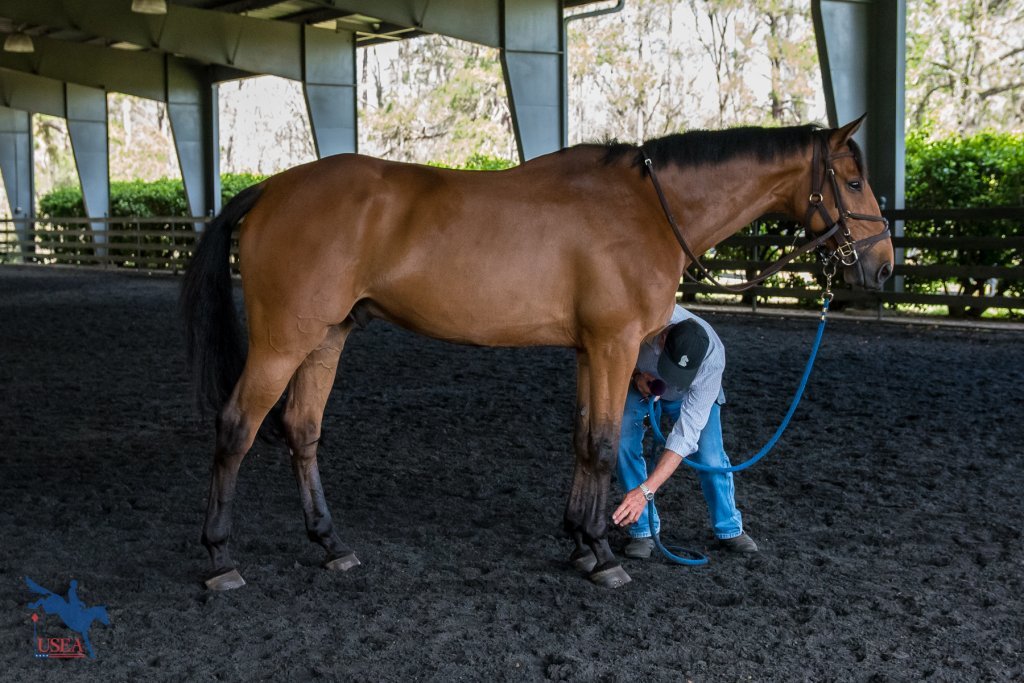
After the group had an opportunity to assess the conformation of a more established horse to gain a better understanding of how conformation can develop over time, the group moved on to evaluate yearlings, 2-year-olds, 3-year-olds, and 4-year-olds like they would in a Future Event Horse class. Ryan and Walker first offered their assessment of the horse’s conformation and the crowd would have the chance to discuss the different conformational aspects that would affect that particular horse. Each horse also demonstrated their walk and trot on the FEH triangle so that attendees could observe how the assessment of a particular part of the conformation might change once the horse showed off their gaits. “For me, it’s about more than just the form,” commented Ryan. “I want to see them in action.”
Attendees at this afternoon’s session also got a look at the 2017 East Coast FEH Yearling Champion, Yearling Filly Champion, 2-year-old Champion, and 3-year-old Grand Champion, all of whom are owned by Ronald Zabala-Goetschel. Ryan and Walker, who were the judges at last year’s Championships, explained to the group some of the positive conformational aspects and also discussed some of the parts of the horse’s conformation that might be less than ideal.
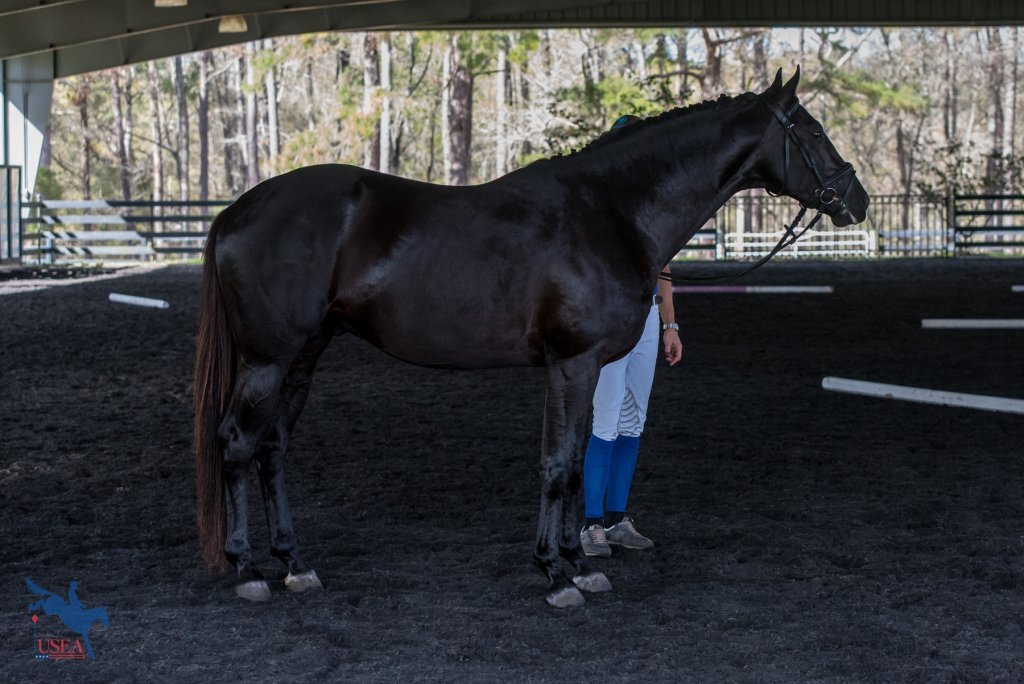
Ryan echoed this morning’s classroom discussion about allowable conformation defects. “From training horses and producing horses, there are things that we’ll allow and that we accept from our own experience.” Walker added that, “There are degrees of everything . . . conformation and soundness obviously go hand in hand, as well as longevity . . . when we’re breeding and when we’re choosing horses, we want to get as close to correct as you can tolerate. There will be degrees of, ‘I can live with that,’ and there will be degrees of, ‘I can’t live with that.’”
“People think conformation judging is scary, and it shouldn’t be scary at all,” stated Ryan. “It’s only a training and a disciplining of your own eye.” The FEH Committee is committed to elevating the standard of judging for the FEH program and will therefore be performing a mock FEH Judge test at the 2018 Future Event Horse Championships with the goal of implementing a formal FEH Judge testing system in 2019.
Check out the daily coverage and photo galleries from day one and day two of the ICP Symposium and from the Young Event Horse Symposium.
The USEA would like to thank EquiAppraisal, LLC for sponsoring this year’s Educational Symposium.
The USEA would also like to thank ICP, YEH, and FEH Sponsors who make these programs possible: Standlee Hay Company, Merck Animal Health, SmartPak, and Professional’s Choice.
And finally, the USEA would like to extend a thank you to our featured clinicians; Leslie Law, Kai-Steffen Meier, and Chris Ryan, our speakers; Marilyn Payne, Robin Walker, Dr. Shauna Spurlock, and all the current and prospective judges, riders, trainers, breeders, and owners who made this year’s Educational Symposium a success.
About the USEA Future Event Horse Program
The USEA introduced the Future Event Horse (FEH) program in 2007 as a pilot program in response to the popularity of the already established USEA Young Event Horse (YEH) program. Where the YEH program assesses 4- and 5-year-old prospective event horses based on their performance, the FEH program evaluates yearlings, 2-year-olds, and 3-year-olds for their potential for the sport based on conformation and type. Horses are presented in hand and divisions are separated by year and gender. At the Championships, 3-year-olds are also required to demonstrate their potential over fences in an additional free-jump division.
New in 2017 was the FEH 4-year-old division, designed for youngsters not quite ready for the rigors of the Young Event Horse program. These horses are presented under saddle at the walk, trot, and canter before being stripped of their tack and evaluated for their conformation. Additionally, 4-year-olds also participate in the free-jump divisions at Championships to show their potential over fences. Click here to learn more about the Future Event Horse Program.
